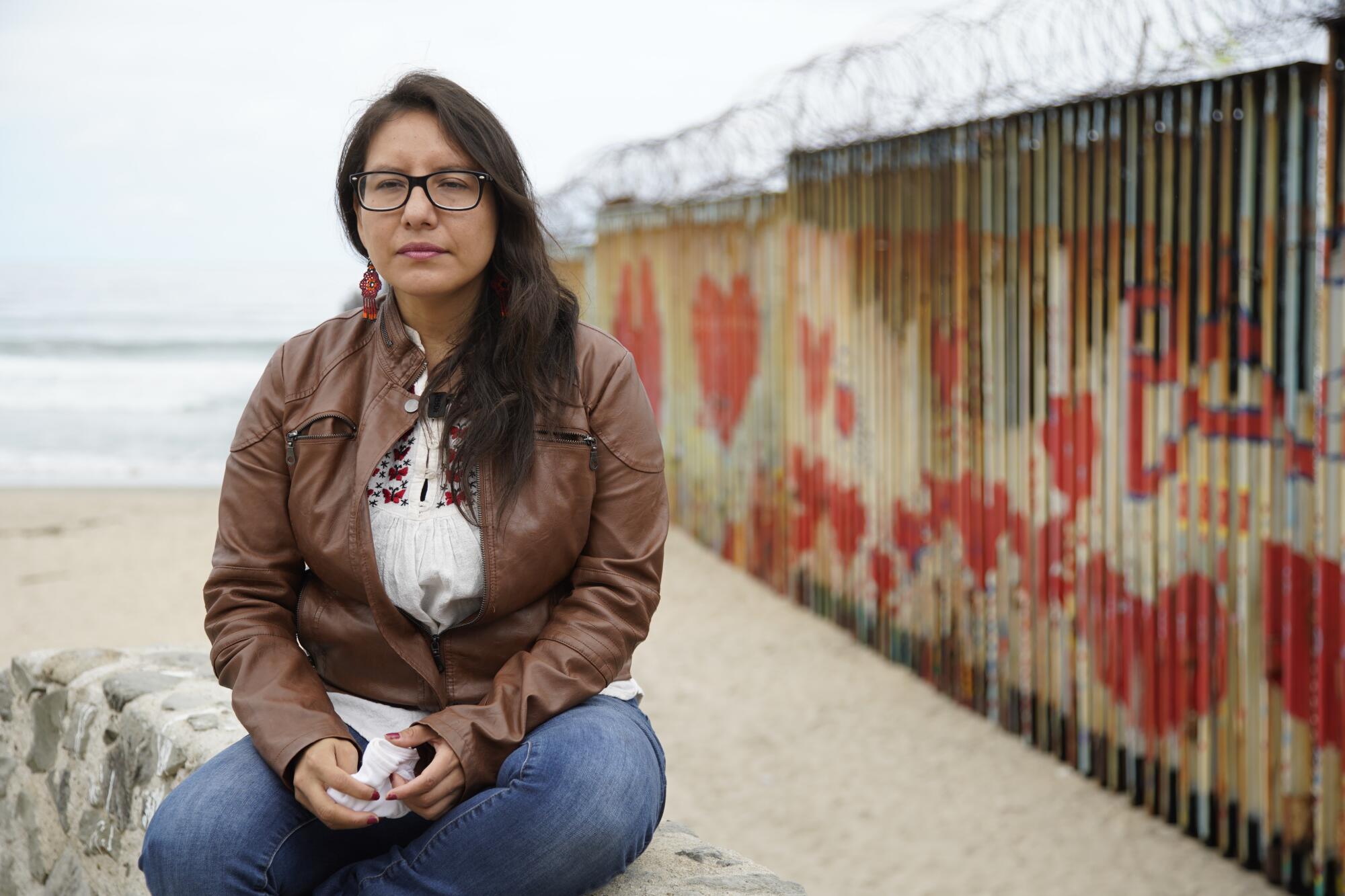
- Share via
TIJUANA — In her first moments back in Mexico after more than 30 years away, Dulce Garcia laughed at how easily she was able to cross south.
It was a moment that Garcia thought would not be possible. It was also a moment she feared.
Garcia, 38, has lived most of her life as an immigrant illegally in the United States. Under normal circumstances, if she went to Mexico, she would not be able to return to her home in San Diego.
Because she came to the United States at age 4, she was able to enroll in the Deferred Action for Childhood Arrivals, or DACA, which temporarily shields so-called Dreamers who came to the United States as children from deportation and allows them to get two-year renewable work permits.
As an immigration attorney and executive director of the nonprofit Border Angels, Garcia was able to convince the U.S. government that she needed to do work in Tijuana.
The government gave her emergency permission to leave the United States for up to 60 days and come back — a program called “advance parole.”
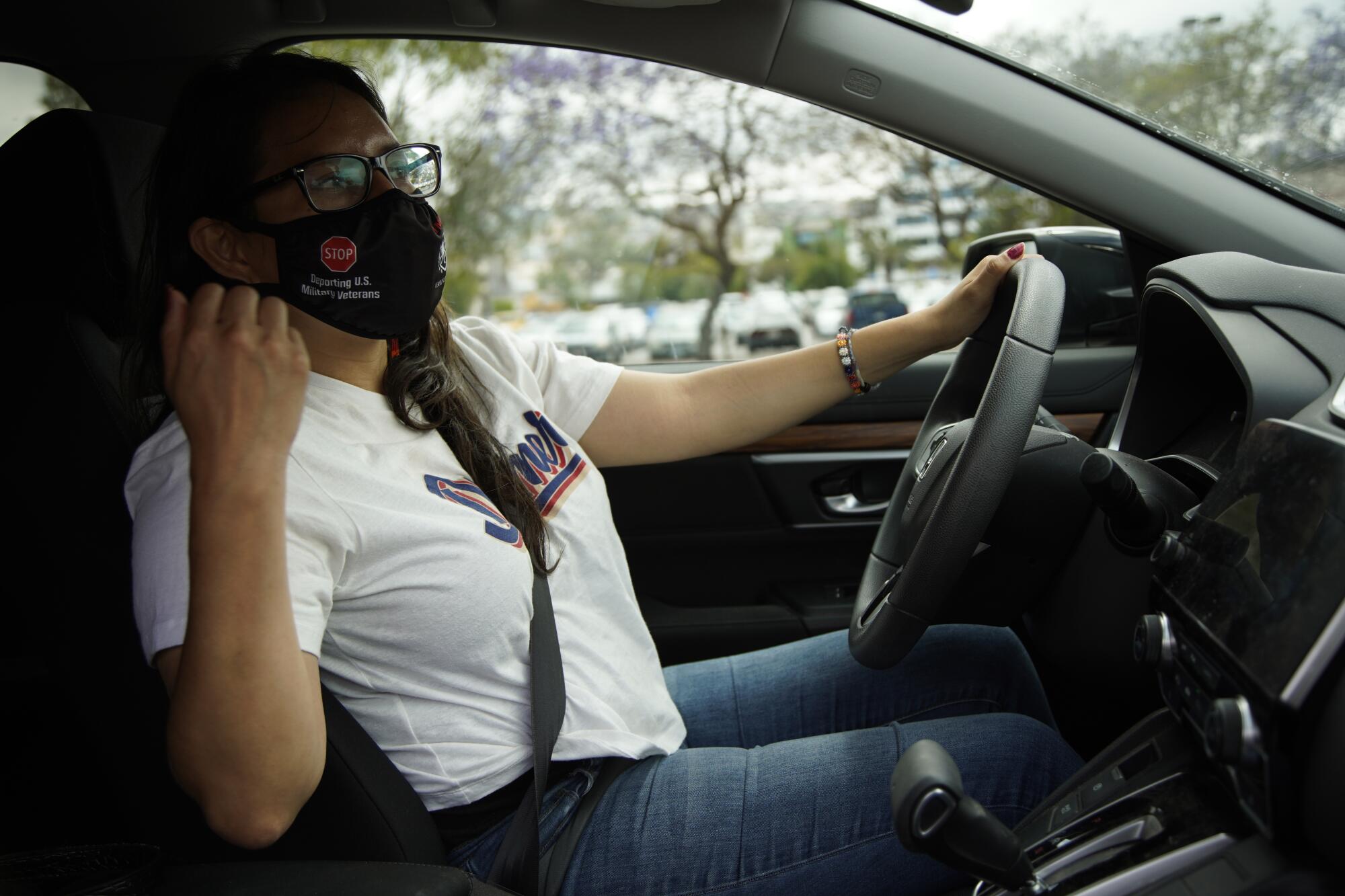
After a scramble to pack and prepare, on March 25, Garcia found herself waiting to turn left onto an entrance ramp that she had avoided her entire life, the one to Interstate 5 south where the sign reads “Mexico only.”
As she drove past Mexican officials, no one checked her paperwork. No one asked about the bags of donations piled into her SUV that she gathered to bring to asylum-seeking families.
“This is it? That’s it!” Garcia exclaimed as she rounded the curve from customs to Tijuana. “Que fácil!”
But that giddiness didn’t last long. Once she arrived at the tent camp of asylum seekers who have been waiting at the U.S.-Mexico border for months, mere feet from the entrance to the United States, her feelings quickly turned to anger as she took in their conditions. The lack of access to bathrooms and water particularly caught her attention.
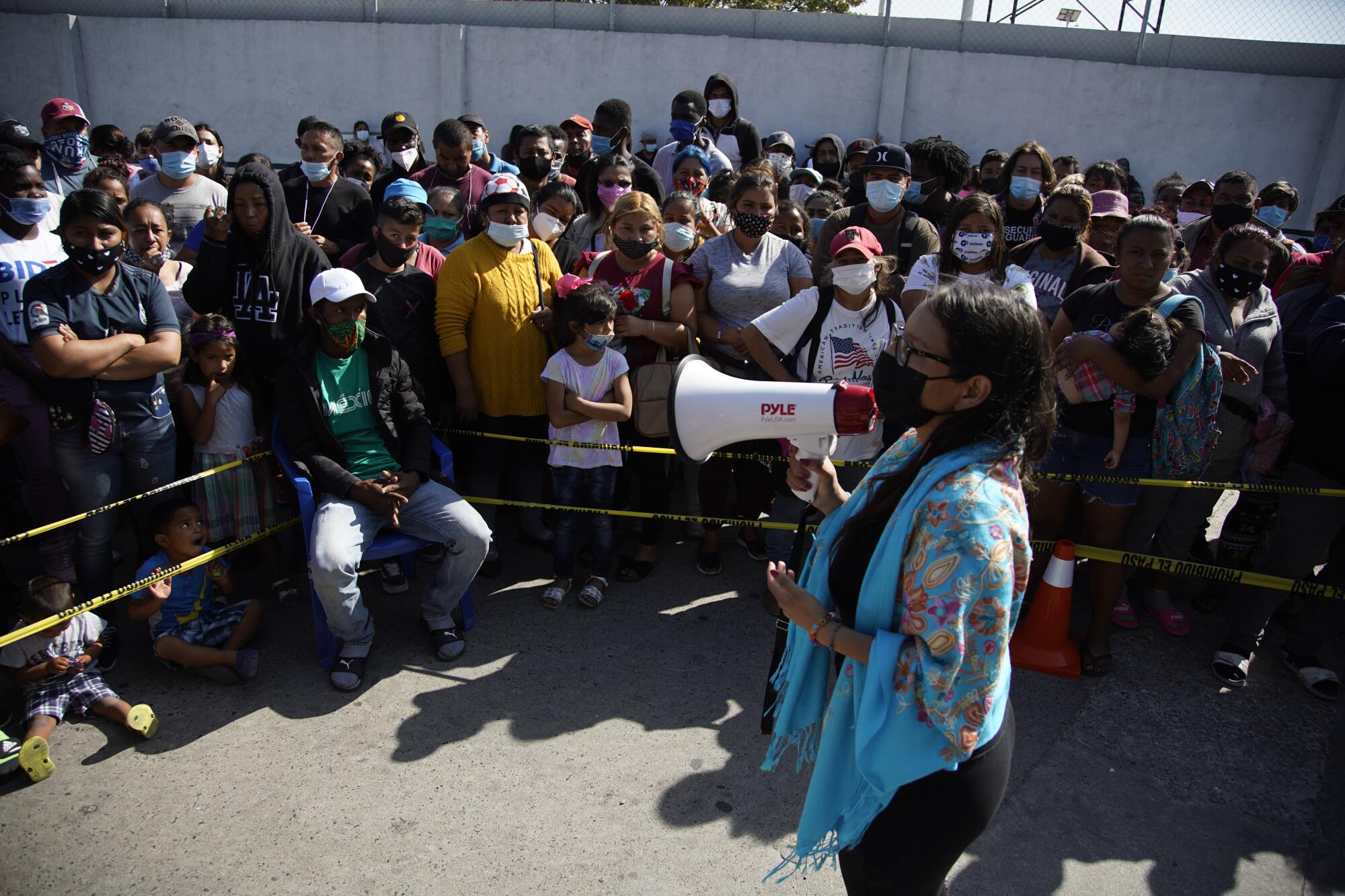
“I’m already disillusioned,” she said as soft rain splattered on her face shield after she handed out supplies. “Mexico and America are both parts of me. They’re both failing. It’s complete heartbreak.”
Under the Trump administration, officials implemented policy after policy that restricted access to the U.S. asylum system — as well as access to U.S. soil — for migrants fleeing their home countries and seeking protection at the southwest border. While the Biden administration has begun to wind down some of those policies, others remain in place. Among them is Title 42, which began under the pandemic and allows officials to expel migrants back to Mexico or their home countries without reviewing their fear claims.
Though President Biden campaigned on making a “humane” asylum system, he has yet to implement that promise.
In the meantime, migrant shelters around Tijuana are full, and the camp at El Chaparral plaza has grown to more than 200 tents, and an estimated 2,000 people, according to Garcia. Waiting asylum seekers face threats from gangs and cartels who take advantage of their vulnerabilities. Many are kidnapped, raped or even killed in northern Mexico.
In the void left by the Mexican and United States governments, organizations like Border Angels and other nonprofits in Tijuana and San Diego have tried to fill in gaps, supporting local shelters, unhoused asylum seekers and the tent camp as best they can with food, legal aid and some basic healthcare.
At first, Garcia thought she might stay a week or two, but as she learned about more needs from the waiting asylum seekers, she postponed her return again and again until she finally came back the day before her permit would expire.
“I told myself I was going to take it easy now that Biden is in office — gosh, I was so wrong,” Garcia said. “Things were supposed to have been easier.”
In her first days, she quickly installed portable toilets at the tent camp. And she began to visit the wide range of shelters that Border Angels supports through donations — a total of 18 after she added to the list during her stay.
She showed up unannounced to each shelter, hoping to see it in its normal state rather than cleaned up for an official visit from its benefactor.
Most left her feeling disappointed. Many had pushed their capacity past what was comfortable in order to get as many migrants as possible off of the streets. Tents or bunk beds were crowded into the available space.
Some of the shelters charged migrants to stay there. Others required them to leave during the day and come back each night.
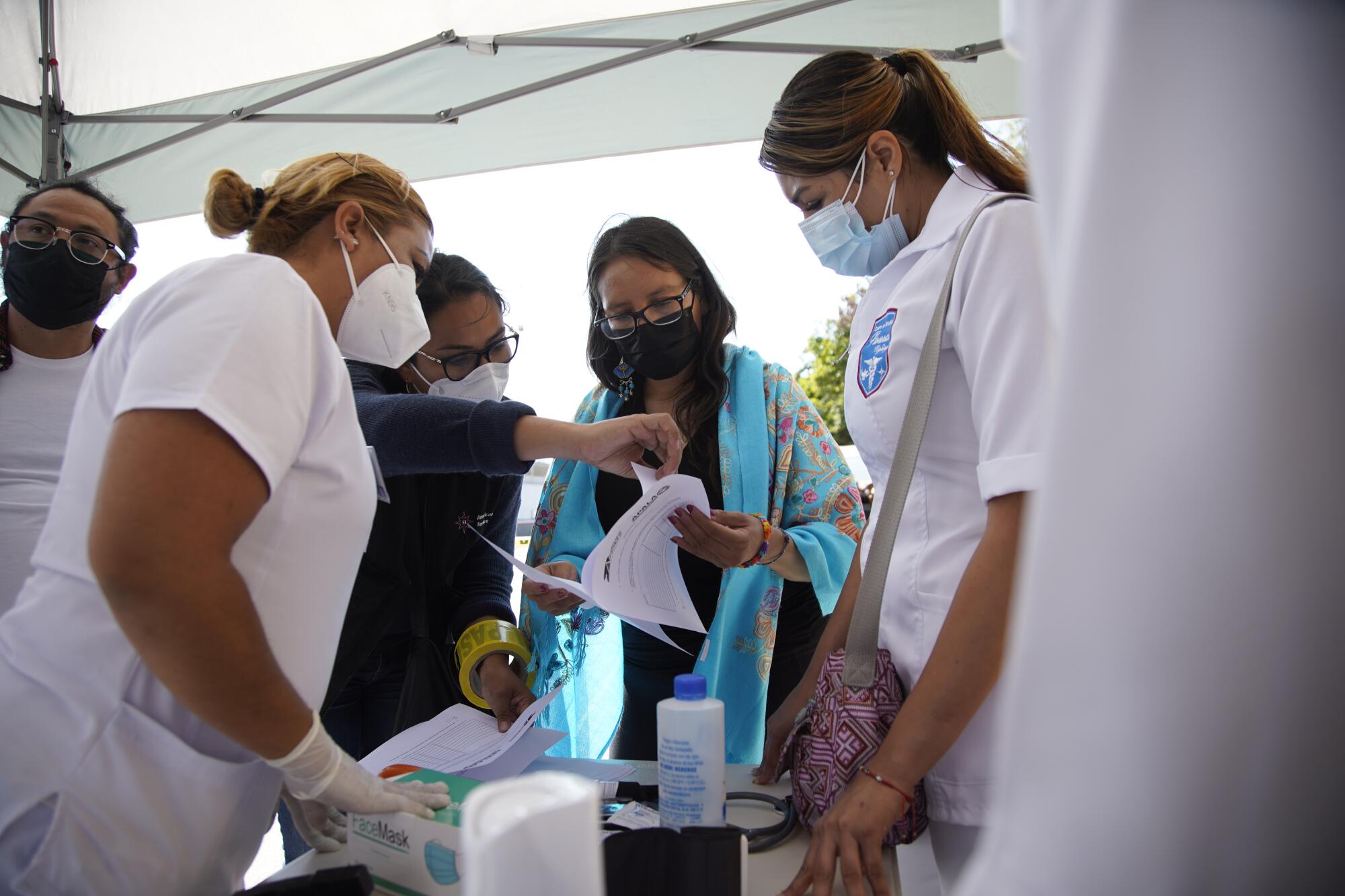
Only some had COVID-19 protocols.
“There’s nothing as good as coming over and seeing things for yourself,” Garcia said. “There’s still a lot of work to do to make these spaces feel welcoming so that we can refer people.”
But when she reached Casa Puerta de Esperanza, a Salvation Army shelter specifically for women and children, Garcia began to cry as she took in the vibrant colors and clean, inviting rooms.
“It’s so nice. The others aren’t like this,” Garcia said to the woman in charge. “Thanks for having a space where women can be with their children with dignity. No other space is like this.”
Between shelter visits, she returned to El Chaparral. When some people staying there began to receive threats, she helped them find shelters to go to.
On Children’s Day, she partnered with American Friends Service Committee to bring an obstacle course bouncy house to the plaza. The children were ecstatic.
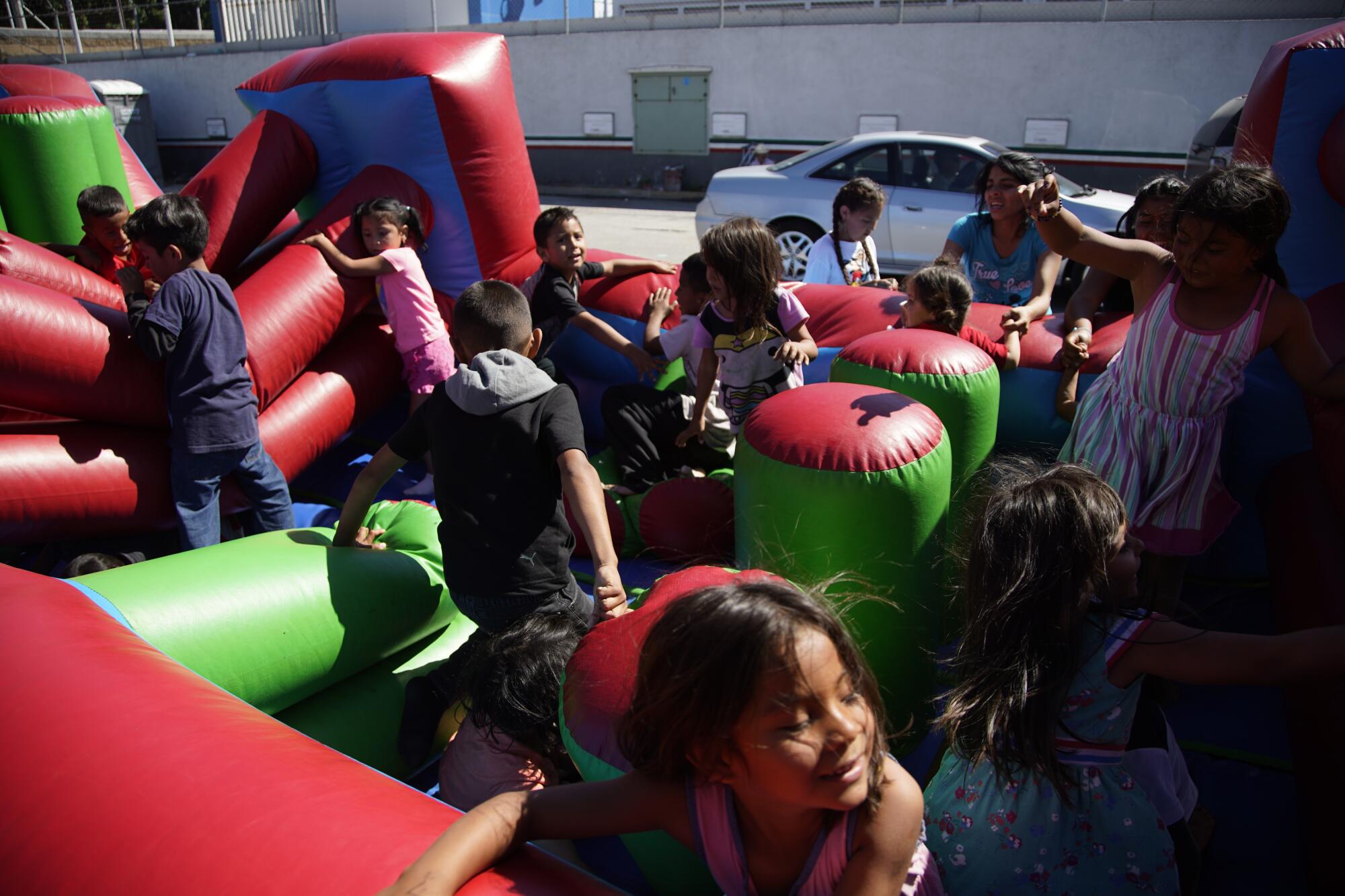
Once she found out about a new program that could allow especially vulnerable asylum seekers into the United States as exemptions to Title 42 that came out of negotiations in a lawsuit filed by the American Civil Liberties Union over the policy, she began holding legal consults there as well.
Each time she arrived, asylum seekers were already waiting for her in the street where she set up her tables. Psicólogos Sin Fronteras members and American Friends Service Committee staff pitched in with crowd control and intake, passing a megaphone among them to instruct pregnant women to come first.
When a few asylum seekers who weren’t living at the tent camp tried to join in, the crowd protested, and Garcia told them through the megaphone that only those living at El Chaparral would be seen.
“It’s not pretty,” Garcia said of the consults. “I end up being the bad guy because I have to say no to over 90% of them. I can’t help everyone.”
The program takes 35 families a day along the entire southwest border, according to Lee Gelernt, lead attorney in the case for the ACLU. A parallel program set up through several global nonprofits is ramping up to help the U.S. government identify and process an addition 250 people per day.
Garcia filled out the exemption paperwork for more than 100 families, some with a dozen family members.
She also submitted an exemption request for Rocio Rebollar Gomez, who was deported at the beginning of 2020 despite being the mother of a U.S. Army officer. Rebollar Gomez had been targeted and attacked since her deportation, so Garcia was able to apply for her based on a new asylum claim.
Garcia also applied for her brother, Edgar Garcia, who was deported the week after Rebollar Gomez while his own DACA protection had lapsed.
He’d hidden what had happened to him after his deportation from his family until his sister showed up in Tijuana. Once together, he confided in her that he’d been kidnapped for months, and that he’d recently been beaten and robbed by police.
“If I had known about that while I was in San Diego, it would have destroyed me,” Dulce Garcia said.
She quickly moved him to her hotel room and kept him by her side as she navigated the final weeks in Tijuana. He helped by putting water bottles in her car seat so she would remember to hydrate and even brushing her hair in their hotel room as she wrote a last-minute speech to present virtually at a university event.
Helping asylum seekers get into the United States does not come without risks. Criminal organizations see each person who enters through the Title 42 exemption as potential money lost, and attorneys have faced threats for doing the work, Garcia said.
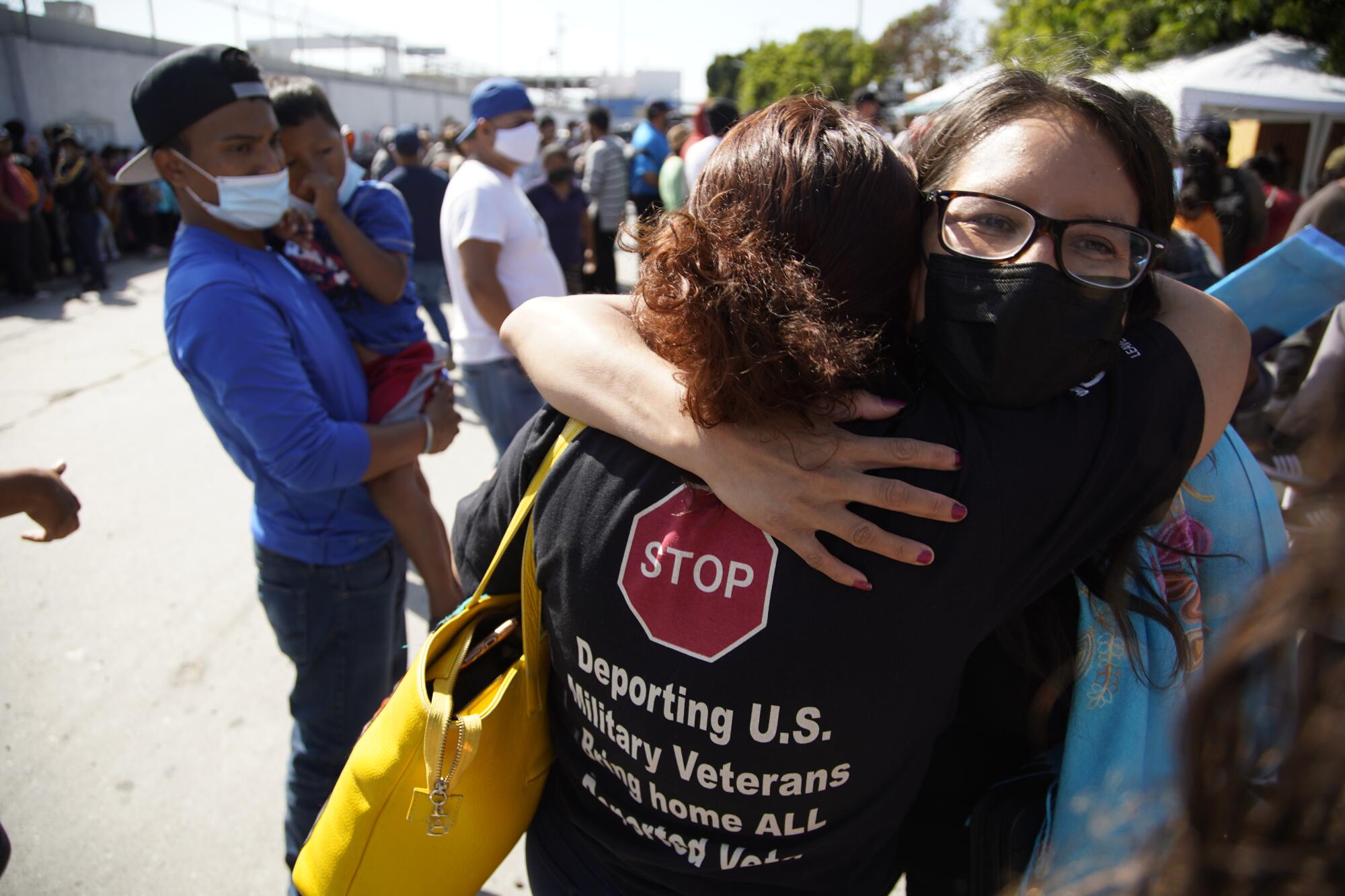
Some of Garcia’s friends in the U.S. urged her to come back before something happened to her, but even after her Shih Tzu Max died back in San Diego, she found the will to stay, buoyed by her family.
She learned that some unaccompanied children were being rejected from the port of entry instead of being processed like they are supposed to be as minors, and she began escorting them up to U.S. officials to ensure that they would be taken in. Sometimes she had to argue with officers for more than an hour before the children were accepted.
One girl told her that she wanted to be a lawyer like Garcia. That moment made the danger, the exhaustion and the stress feel worth it, Garcia said, especially knowing that a mother would be reuniting with her daughter on the other side.
“I wanted to do the same for my mom,” Garcia said. “I want my mom to get her son back.”
Before she left, she submitted testimony to Congress based on her experiences in Tijuana — she called it “the highlight of [her] career.”
On her last day, she went with her brother to Playas, the Tijuana beach that makes up the southern side of Friendship Park, a binational park that has been closed off by layers of U.S. border barrier.
She grew emotional talking about the people she was leaving behind, the people who still had no way to reach the other side.
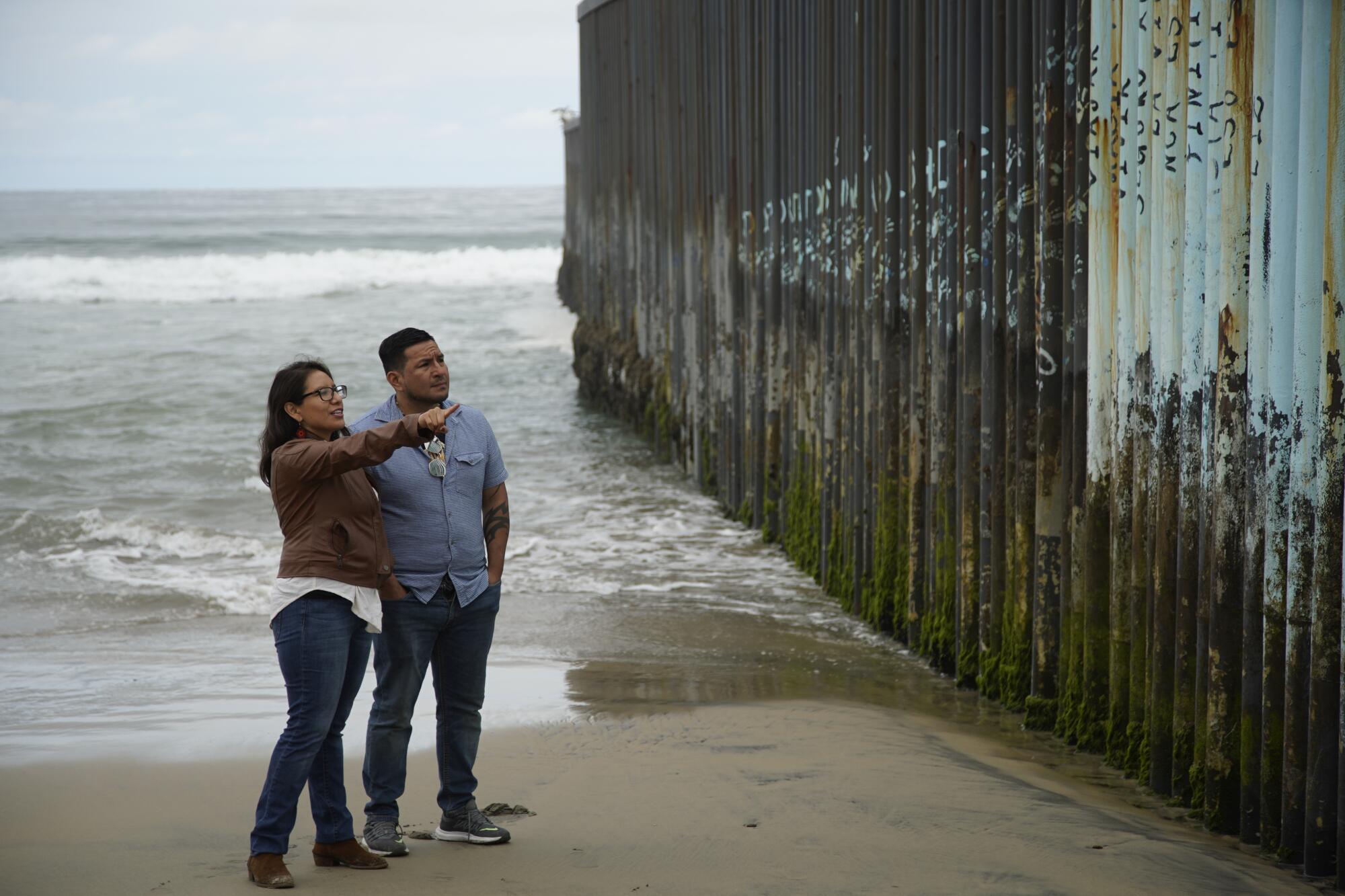
A little after 2 p.m., she pulled into the cross-border lanes.
As she waited in the line of cars for about four and a half hours, she oscillated between excitement and nerves — not for herself, but for those who would soon follow: her brother and Rebollar Gomez. And she worried about those she hadn’t yet been able to help.
“I still don’t think I’m done,” Garcia said. “I’m leaving with the sense that I’m leaving it incomplete. I could do more, and I want to do more.”
She didn’t fully realize what she was actually doing — crossing a border that would normally be closed to her — until she was sent to secondary inspection and waiting for an official to stamp her parole document.
Around 8 p.m., she was allowed to leave the inspection area and drove past the raised gate, elated.
“It does feel different. It really does feel different,” Garcia said. “I feel like a weight has been lifted. It’s a relief.”
She was finally home.
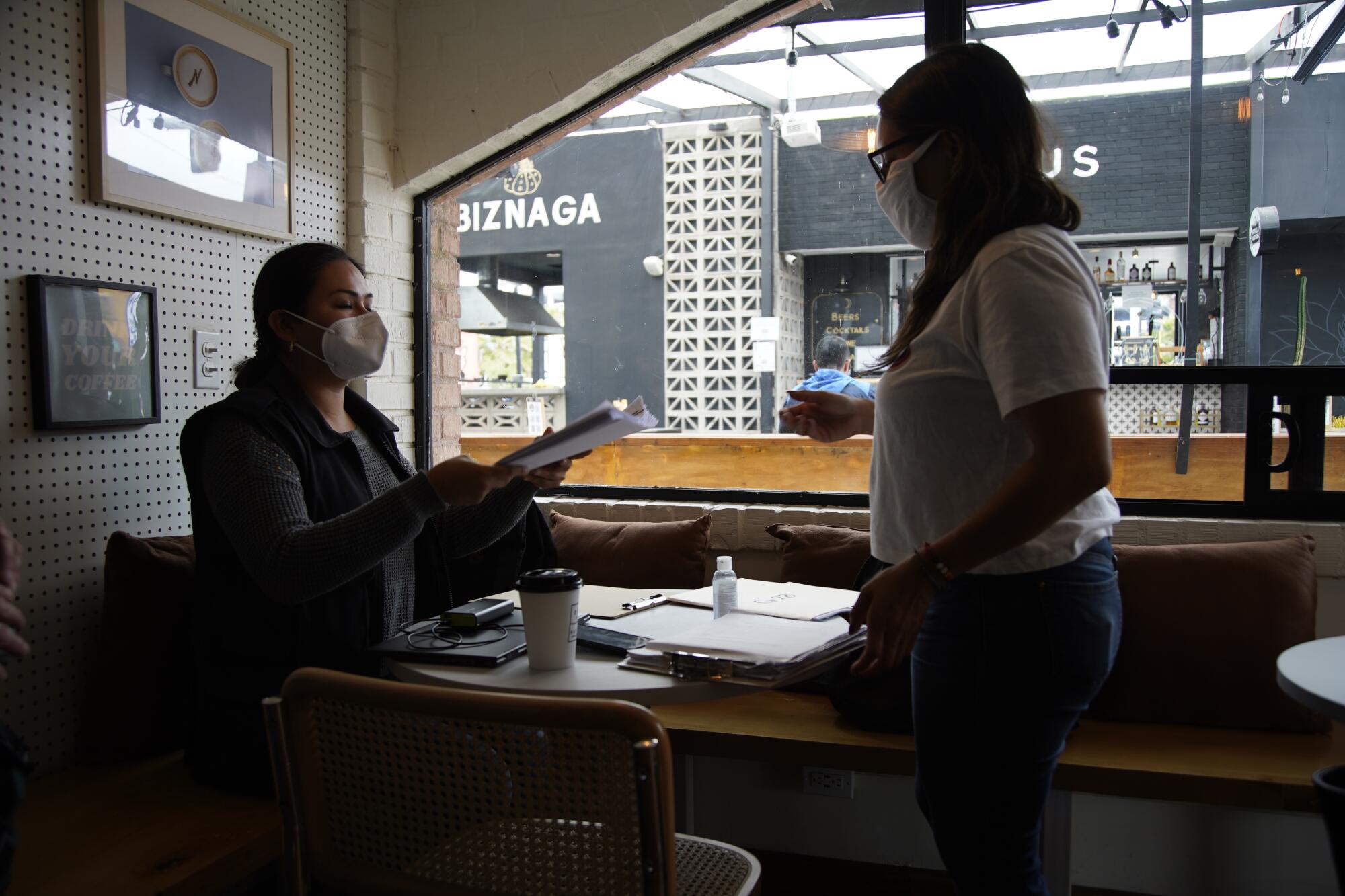
More to Read
Sign up for Essential California
The most important California stories and recommendations in your inbox every morning.
You may occasionally receive promotional content from the Los Angeles Times.










